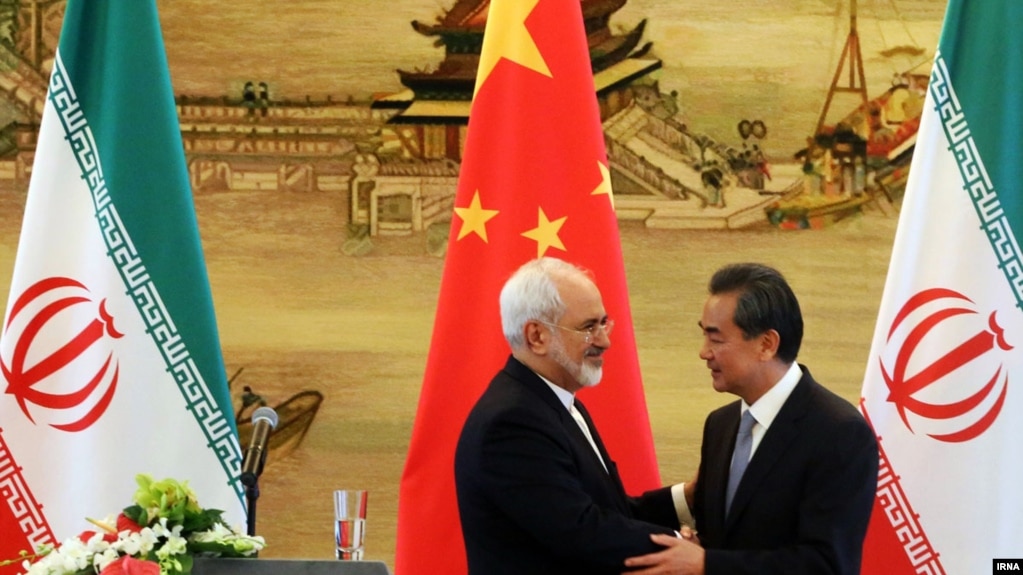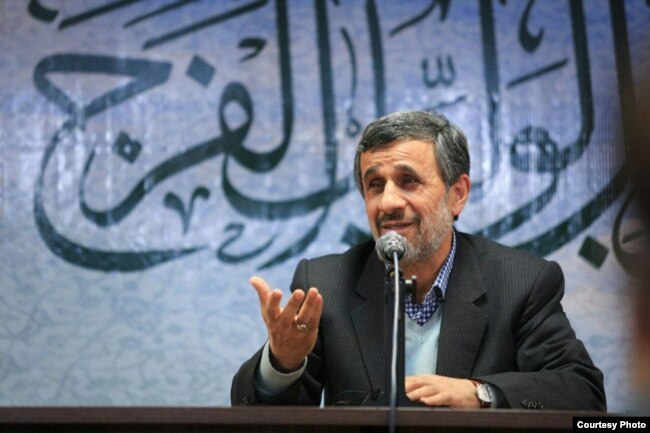
Iran is negotiating a controversial 25-year agreement with China that has led to accusations that parts of Iran are being sold to Beijing.
Some critics — including the U.S. State Department — are comparing the proposed deal to the 1828 Treaty of Turkmenchay between Persia and tsarist Russia, under which the Persians ceded control of territory in the South Caucasus.
Iranian officials have dismissed the criticism as baseless while promising to make the text of the agreement public once it is finalized.
What Do We Know About The Agreement?
The pact was proposed in a January 2016 trip to Iran by Chinese President Xi Jinping during which the two sides agreed to establish their ties based on a Comprehensive Strategic Partnership, while announcing discussions would begin aimed at concluding a 25-year bilateral pact.
The announcement received the support of Iran’s highest authority, Supreme Leader Ayatollah Ali Khamenei, who was quoted by Iranian media as saying that the agreement reached between the two sides was “wise.”
The text of the agreement, which will need to be approved by parliament, has not been released. But in recent days an 18-page document has been making the rounds on social media that outlines future cooperation between the countries, including Chinese investment in Iran’s energy sector as well as in the country’s free-trade zones.
RFE/RL cannot verify the authenticity of the document, which has been cited by some Iranian and Western media as a leaked version of the planned pact between Iran and China.
Analysts note the agreement being circulated is very light on details and appears to be the framework of a potential deal.
According to the text, which is labeled “final edit” on its front page and dated the Iranian month of Khordad — which starts May 21 and ends June 19 — the two sides will also increase military and security cooperation while working on joint-projects in third countries.
Iran has in recent months increasingly reached out to China in the face of growing U.S. pressure to isolate Tehran. China remains Iran’s main trading partner but trade between the two sides has dropped due to U.S. pressure in recent years.

Amid Pressure From U.S. Sanctions, Iran Reaches Out Publicly To China
Analysts say China is not ready to give Tehran the support it seeks while also suggesting that some of the cooperation envisaged in the pact may never materialize.
Ariane Tabatabai, a Middle East fellow at the Alliance for Securing Democracy at the German Marshall Fund of the United States, said, given its importance, the U.S. will always trump Iran for China.
“Iran is a small, risky market, sanctions have severely impeded business [there], and the regime is isolated,” she told RFE/RL. “Meanwhile, China has major economic interests in the U.S. and the trade war is still an important concern for China, which will inevitably shape its relationship with Iran.”
“If we look into what we know about the document and make some educated guesses, we see that the agreement is little more than a comprehensive road map based on the 2016 framework, which does not resolve the main issue of the China-Iran partnership — its implementation,” Jacopo Scita, an Al-Sabah doctoral fellow at Durham University, told RFE/RL.
Why Is The Treaty Controversial?
The pact is being discussed at a time when Iran is under intense pressure due to harsh U.S. sanctions that have crippled the economy and a deadly coronavirus pandemic that has worsened the economic situation.
The timing as well as the scope and duration of the agreement has led to increased concerns that Tehran is negotiating with China from a position of weakness while giving Beijing access to Iran’s natural resources for many years to come.
A distrust in the Iranian authorities that intensified after a deadly November crackdown on antiestablishment protests and the downing of a Ukrainian passenger jet — which was initially seen as a coverup — has also contributed to the criticism of the proposed deal.
A lack of trust in China, as well as rising anti-China sentiments due to the coronavirus pandemic, has also contributed to the controversy surrounding the pact.
Tabatabai, the co-author of a book on Iranian ties with Russia and China, says the relationship between Tehran and Beijing has long been perceived as benefiting China far more than Iran.
“The perception isn’t fully inaccurate,” she said. “From the elite’s perspective, China makes big promises and delivers little. And from the population’s perspective, China has been benefiting from the sanctions on Iran, it’s flooded the Iranian market, pushed out Iranian businesses, and has delivered products that are subpar.”
She added: “Many Iranians feel like this deal will cement this unbalanced relationship.”
What Are The Critics Saying?
Criticism of the planned pact appears to have increased following comments by former President Mahmud Ahmadinejad, who warned in a speech in late June that a 25-year agreement with “a foreign country” was being discussed “away from the eyes of the Iranian nation.”
Others have since joined the criticism, including former conservative lawmaker Ali Motahari, who appeared to suggest on Twitter that before signing the pact Iran should raise the fate of Muslims who are reportedly being persecuted in China.

U.S. Sanctions Chinese Officials Over ‘Horrific’ Abuse Of Uyghurs, Ethnic Kazakhs
Scita, who closely follows Iranian-Chinese relations, says some of the hype and anger surrounding the agreement were boosted by public figures with political agendas, including Ahmadinejad, who is said to be eying the 2021 presidential election.
The exiled son of the shah of Iran, the country’s last monarch who was ousted following the 1979 Islamic Revolution, has also criticized the pact.
Reza Pahlavi, who’s taken an increasingly active role against the Islamic republic, blasted the “shameful, 25-year treaty with China that plunders our natural resources and places foreign soldiers on our soil.” He also called on his supporters to oppose the treaty.
The Persian account of the U.S. State Department referred to the planned agreement as a “second Turkmenchay” and said that Tehran is afraid to share the details of the pact because “no part of it is beneficial to the Iranian people.”
What Are Iranian Officials Saying?
Earlier this month, Foreign Minister Mohammad Javad Zarif confirmed that Tehran was negotiating an agreement with China “with confidence and conviction,” while insisting there was nothing secret about it.
Since then, officials have defended the deal while dismissing claims that Iran will sell discounted oil to China or give Kish Island to Beijing.
President Hassan Rohani’s chief of staff, Mahmud Vaezi, said over the weekend that the framework of the agreement has been defined, adding that the negotiations are likely to be finalized by March 21.
Vaezi also said the agreement does not include foreign control over any Iranian islands or the deployment of Chinese military forces in the country.


